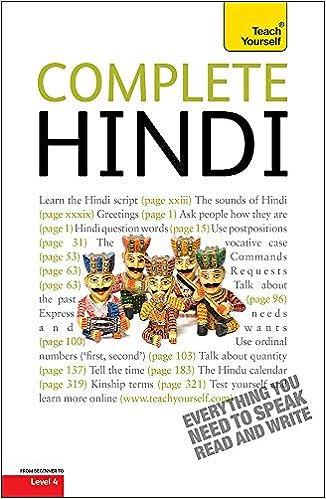
Discover 15 Fascinating Lesser-Known Facts About the Hindi Language
Hindi language, in India, is one of the 20 official languages and also the mother tongue. Written in Devnagari script, its alphabetical table of Hindi is called ‘Varnmala’ which means ‘garland of letters’. There are over 600 million speakers of Hindi from all across the world. In this post, I am sharing 5 amazing facts about the Hindi language perhaps you didn’t know.
- The word ‘Hindi’ has been derived from the word ‘Hind’ which means Land of the River Indus. Also, the word Hind is a Persian word.
- Hindi is taught in over 180 universities around the world out of which 45 are American Universities.
- Hindi is the 4th most-spoken first language in the world, after Spanish, Mandarin and English
- Hindi alongside Urdu termed Hindustani is the 3rd most-spoken language in the world, after Mandarin and English
- Hindi is the only language in which what you write is the same as what you pronounce unlike in English where what you write is not as what you pronounce and often pronunciations are different like To and Go for instance.
- There are many Hindi words such as ‘yoga’, ‘mantra’, ‘nirvana’, ‘avatar’, ‘karma’ etc. taken from Hindi, used in English, and are included in the English word dictionary.
- The Hindi language is used in more than 20 countries including the USA, Yemen, Qatar, Singapore, and Mauritius
- Hindi is one of the 7 languages that are used to make the web address.
- Prem Sagar was the first published Hindi book written by Lallu Lal in 1805. The book is about Shri Krishna
- The first Hindi film was made by Dadasaheb Phalke called Raja Harishchandra was released in 1913
- Hindi is adopted as the third official court language in the UAE
- In Fiji, Awadhi Language which is an eastern dialect of Hindi is the official language. They call it Fiji Hindi
- Hindi is the protected language in South Africa
- There are so many English words that have been derived from Hindi such as Jungle, Verandah, Chit, Myth, Pyjama, Cashmere, Chutney, Thug, Loot, and Bungalow to name a few
- The roots of Hindi date back to the 2nd millennium BC making it one of the most prominent ancient languages in the world.

Learn Hindi in 30 Days Through English (30 दिन में अंग्रेजी से हिंदी सीखें)
Some more details about Hindi languages:-
The Richness and Significance of the Hindi Language
Language serves as a powerful conduit for expressing thoughts, emotions, and culture. One such language that stands as a testament to this idea is Hindi. With over 600 million speakers, the Hindi language holds the title of being one of the most widely spoken languages in the world. Its impact on literature, culture, and communication is undeniable, making it a linguistic treasure that deserves to be explored and celebrated.
Historical Evolution
The origins of the Hindi language can be traced back to the ancient language Sanskrit, which was used in religious and philosophical texts. Over time, as it interacted with various regional dialects, a new form of language emerged – what we now know as Hindi. This evolution was greatly influenced by cultural exchanges, trade routes, and invasions that shaped the linguistic landscape of the Indian subcontinent.
Linguistic Diversity
Hindi language, while commonly spoken, has its own variations across different regions. The Hindi spoken in Northern India might differ in vocabulary and pronunciation from the Hindi spoken in Southern India. The dialects within Hindi are often influenced by local languages, adding layers of complexity and beauty to the language. Despite these variations, Hindi serves as a unifying force that connects people from different backgrounds.
Literary Brilliance
The Hindi language has a rich tradition that spans centuries. From the classical works of Tulsidas and Kabir to modern poets like Harivansh Rai Bachchan and contemporary authors like Chetan Bhagat, the range and depth of the Hindi language are astounding. The language has been a canvas for expressing a myriad of human emotions, philosophical concepts, and societal commentary. The epics “Ramayana” and “Mahabharata” have been retold in Hindi, giving them a unique cultural touch.
Cultural Influence
Hindi cinema, popularly known as Bollywood, has a global fan base and has played a pivotal role in promoting the language worldwide. The melodious songs, impactful dialogues, and compelling storytelling in Bollywood films have contributed to the popularity of Hindi. The language has become a part of the identity of Indians both within the country and in the diaspora.
Language and Identity
For many, Hindi language is more than just a means of communication; it’s a source of identity and pride. It’s a language that encapsulates the history, struggles, and dreams of a diverse nation. However, it’s important to note that India’s linguistic diversity goes beyond Hindi. The country boasts a multitude of languages, each with its own cultural significance.
Preserving the Language
In the digital age, Hindi has found a new platform for expression through social media, blogs, and online publications. Efforts to digitize literature and make it accessible to a wider audience have gained momentum. Language preservation projects are also underway to safeguard endangered dialects and scripts, ensuring that the linguistic heritage remains intact for future generations.
Conclusion
Hindi language, with its historical significance, cultural influence, and literary brilliance, continues to weave itself into the fabric of India and beyond. As a language that has evolved over centuries, it reflects the journey of a diverse nation. While embracing modernity, it’s crucial to remember the roots and essence of Hindi, appreciating its role in shaping society, literature, and communication.

Leave your comment